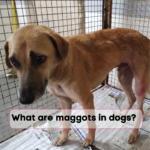What is GDV in dogs?
GDV, also known as gastric dilatation-volvulus, is a serious and potentially life-threatening condition that can occur in dogs. It is commonly referred to as “bloat.” GDV involves the abnormal twisting (volvulus) of the stomach after it becomes distended with gas (dilatation). This twisting restricts blood flow to the stomach and other vital organs, leading to tissue damage and potential organ failure.
The exact cause of GDV is not well understood, but certain factors can increase the risk, including deep-chested breeds such as Great Danes, Boxers, and German Shepherds. Other potential contributing factors include eating too quickly, large meal sizes, vigorous exercise after eating, stress, and a family history of GDV.
The symptoms of GDV can vary but may include:
Distended abdomen: The dog’s abdomen appears swollen or bloated.
Unproductive vomiting: Attempts to vomit without bringing anything up.
Restlessness and discomfort: The dog may pace, whine, or appear restless.
Difficulty breathing: Rapid or labored breathing.
Pale gums: Due to decreased blood flow and oxygenation.
Weakness and collapse: As the condition progresses, the dog may become weak and eventually collapse.
GDV is a medical emergency, and immediate veterinary attention is crucial. Without prompt treatment, GDV can lead to shock, organ damage, and death. Treatment typically involves stabilizing the dog’s condition, relieving the gas and pressure in the stomach, and surgically correcting the twisting (gastropexy) to prevent future episodes.
If you suspect your dog may be experiencing GDV, it is important to contact a veterinarian immediately for guidance and assistance

 Previous Post
Previous Post Next Post
Next Post